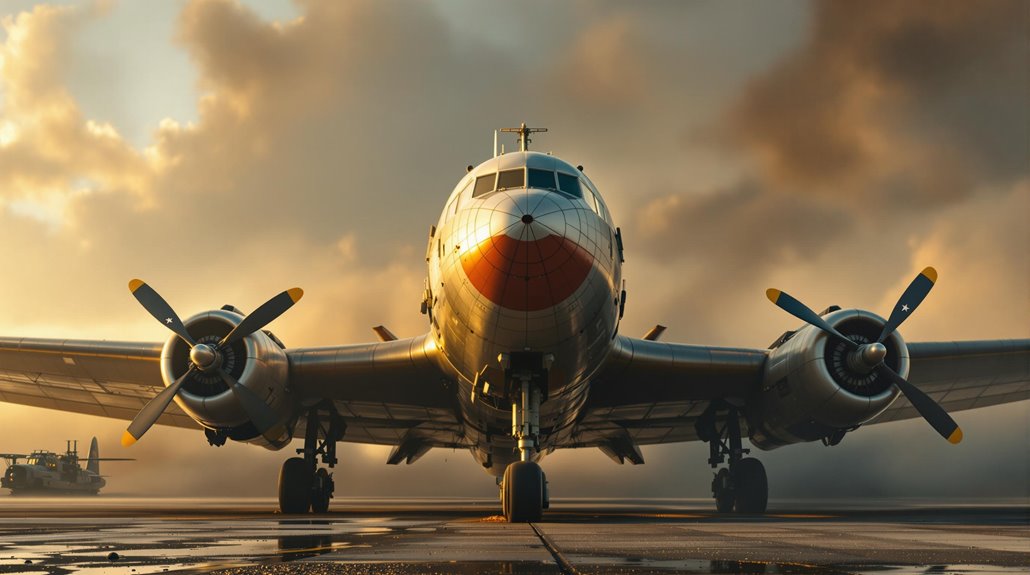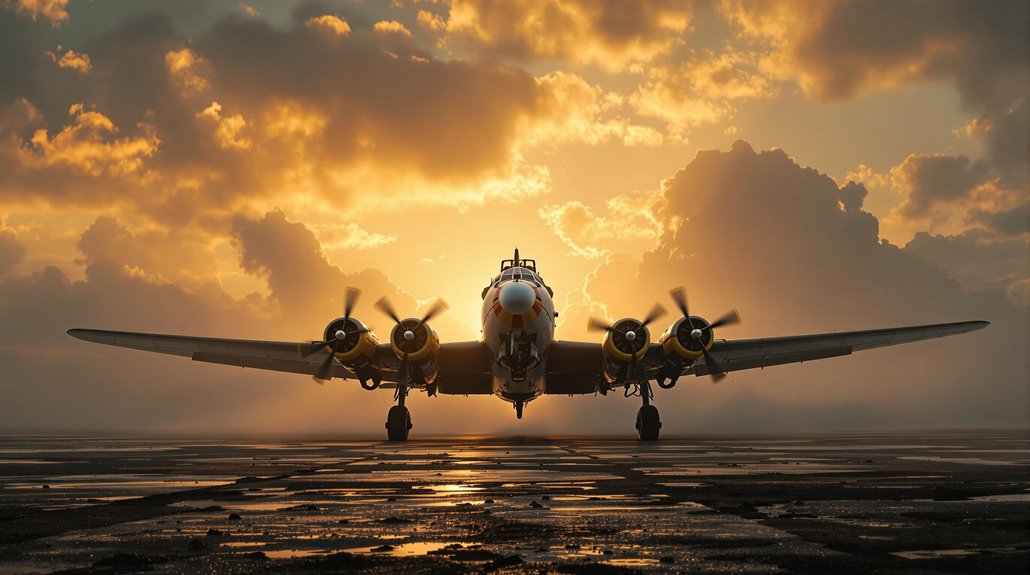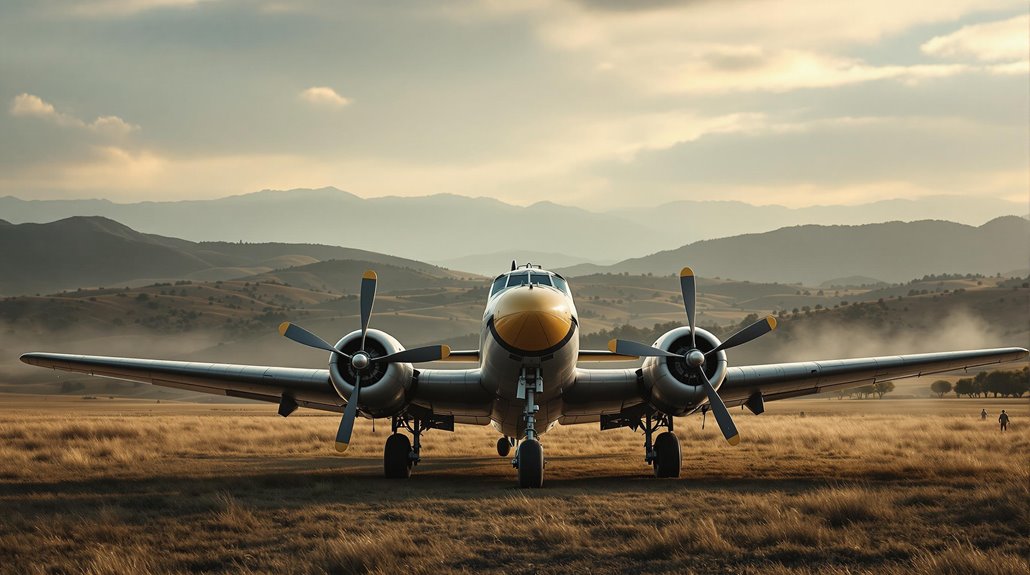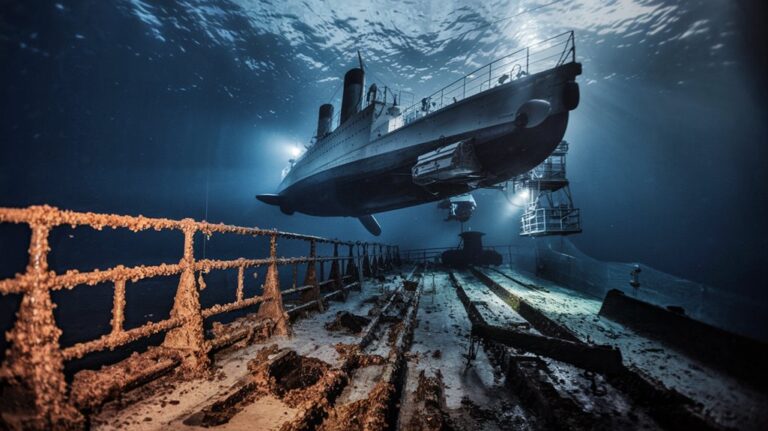Historic Mega-Rescue: 1,000+ People on One WWII Plane
Just as you might be thinking about modern evacuation records, one of history's most incredible rescues happened during World War II without today's advanced technology. You've probably heard of large-scale military evacuations, but Operation Halyard stands out for an almost unbelievable feat: using a single aircraft to save over 1,000 lives from behind enemy lines. While the numbers seem impossible, the true story involves a complex web of secret airfields, brave resistance fighters, and innovative thinking that changed the course of countless lives.
The Real Story Behind Operation Halyard

While many World War II rescue missions remain well-documented, Operation Halyard stood in the shadows for over 50 years as one of history's most remarkable yet classified operations.
You might be amazed to learn that this daring mission saved 512 Allied airmen from Nazi-occupied Serbia in 1944-45.
Through secret communications with local resistance forces led by General Mihailović, American OSS teams coordinated the construction of makeshift airfields in enemy territory.
You'd be impressed by how they managed multiple nighttime evacuations using C-47 cargo planes, all while avoiding German detection.
The operation's success relied heavily on Serbian villagers who risked their lives to shelter and protect downed Allied airmen. Local peasants provided food and shelter despite constant threats of Nazi reprisals.
More than 8,000 Serbian soldiers formed a protective ring around the airmen, keeping them safe from German patrols.
Despite being the largest rescue of its kind, political considerations kept this incredible story classified until recently.
Key Players Who Made the Mission Possible
Through the coordinated efforts of four distinct groups, Operation Halyard's success hinged on the bravery and dedication of its key players.
The OSS contributions came from Lieutenant George Musulin, who initially commanded the mission, and George Vujnovich, who masterfully planned the operation from Italy. Between January and October 1944, the operation successfully rescued 1,152 US aircrew. Their team included essential personnel like radio operator Arthur Jibilian and Serbian-speaking agent Michael Rajacich. The specialized 1 Air Crew rescue unit operated under the Office of Strategic Services.
Yugoslav support proved significant, with General Draza Mihailovic's Chetnik forces and local villagers protecting and sheltering the Allied airmen.
The U.S. military leadership, including Colonel George Kraigher and Major General Nathan Twining, provided critical air support and evacuation resources.
Behind the scenes, diplomatic efforts from the OSS chief William Donovan and various State Department officials helped maintain the mission's secrecy, particularly from Soviet intelligence.
Planning and Executing the Daring Rescue
Under intense pressure to rescue hundreds of stranded airmen, OSS teams launched a meticulous planning operation that would become one of WWII's most remarkable rescue missions.
Through covert operations, they gathered crucial intelligence by parachuting behind enemy lines while working with local resistance fighters to assess conditions on the ground.
The tactical maneuvers involved modifying C-47 transport planes for maximum capacity, calculating precise fuel requirements, and establishing coded signals for ground-to-air communication.
You'll find that every detail was carefully considered – from setting up staging areas for medical care to creating cover stories that masked the mission's true purpose.
Multiple smaller evacuations were planned instead of one large operation, with night-time extractions preferred to minimize detection.
Fighter escorts were assigned to protect the vulnerable transport planes during these critical moments, with extra armor on engines based on wartime damage analysis.
Colonel Hub Zemke coordinated the entire rescue effort with RAF leadership and Field Marshal Montgomery to ensure a smooth evacuation.
Behind Enemy Lines: Building Secret Airfields
Deep within enemy territory, Allied forces and local resistance fighters initiated one of the war's most secretive engineering feats – constructing hidden airfields for the mass evacuation.
You'd find these covert construction teams working under the cover of darkness, using portable equipment they could quickly dismantle if discovered. Local resistance networks provided vital intelligence and labor, while carefully selected locations near forests and hills offered natural camouflage. Much like the Long Range Desert Group, these teams excelled at operating stealthily behind enemy lines while gathering crucial intelligence. The dedicated volunteers, with women comprising half of the workforce, showed remarkable courage in these dangerous construction efforts.
During daylight hours, they'd conceal runways with removable coverings to evade enemy reconnaissance flights.
Despite constant threats from enemy patrols and the risk of informants, the teams persevered. They coordinated with Allied command through secret radio networks, while the SOE and OSS provided essential supplies and training.
These makeshift airfields, built against incredible odds, would soon become lifelines for the impending rescue operation.
Legacy and Impact on WWII Allied Operations

As this historic air rescue operation unfolded, it marked a pivotal shift in Allied air superiority that would reshape the entire European theater.
You can trace how this mission demonstrated the Allies' growing dominance in the skies, which proved essential for the success of strategic bombing campaigns and support operations across Europe. The massive rescue operation benefited from Operation Overlord's success in establishing a crucial Western front.
The mission's success highlighted how far Allied capabilities had advanced, enabling safer air operations while forcing the Luftwaffe to spread its resources thin.
This success followed the Allies' decisive victory in the North African Campaign, which had already demonstrated their ability to coordinate massive military operations.











